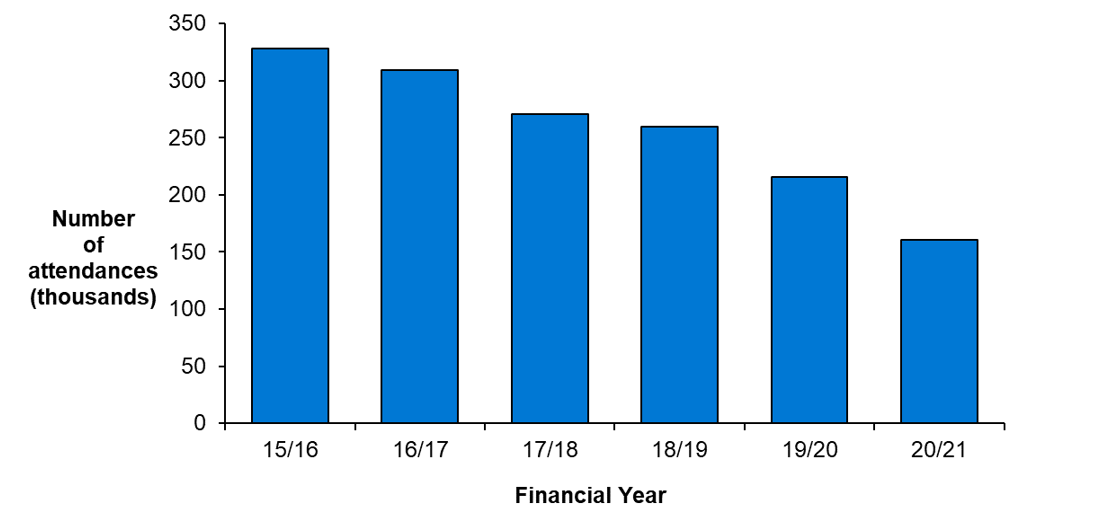Injecting equipment provision in Scotland
2020 to 2021
An Official Statistics publication for Scotland
- Published
- 05 October 2021
- Type
- Statistical report
- Author
- Public Health Scotland
About this release
This release by Public Health Scotland presents information on the provision of injecting equipment. This includes the number of outlets, attendances and the types of injecting equipment distributed to people who inject illicit drugs (including Novel Psychoactive Substances and Image and Performance Enhancing Drugs) in Scotland in 2020/21.
Main points
- In 2020/21, there were a total of 330 injecting equipment provision outlets in Scotland. This was an increase of 17% compared to 2019/20 (281) and the highest number recorded since data recording began in 2007/08.
- In 2020/21, changes in injecting equipment provision services due to direct and indirect consequences of the COVID-19 pandemic may have contributed to changes in the number of attendances at outlets and the distribution of injecting equipment.
- In 2020/21, there were 160,337 attendances reported by injecting equipment provision outlets, 26% fewer than in 2019/20 (215,957). This follows a steady decrease in attendances over the last five years.
Number of reported injecting equipment provision attendances in Scotland; 2015/16 to 2020/211,2

- Attendance data from NHS Shetland for 2017/18 to 2020/21 were not available.
- NHS Western Isles only provided attendance data in 2017/18 and 2020/21.
- Approximately 2.7 million needles and syringes were distributed by participating outlets in 2020/21. This was 13% lower than in 2019/20 (approximately 3.1 million), and follows a steady decrease over the last five years.
- In 2020/21, wipes or swabs (approximately 2.5 million), and citric acid or vitamin C (approximately 2.2 million) were the most commonly distributed items of other injecting equipment. The number of these items distributed by injecting equipment provision outlets was lower than in 2019/20 (approximately 2.9 and 2.5 million, respectively).
Background
The purpose of injecting equipment provision (IEP) is harm reduction. The provision of injecting equipment is effective in reducing injecting risk behaviours in people who inject drugs. This intervention helps prevent the transmission of blood borne viruses such as hepatitis C and HIV among people who inject drugs.
IEP outlets are asked to report on the number of attendances, the number of needles and syringes, and items of other injecting equipment distributed. Public Health Scotland are aware of some issues with data quality and completeness due to inconsistencies in reporting across NHS Boards. Between 2011/12 and 2014/15, changes to reporting mechanisms led to problems with the supply of data from some NHS Boards. However, since 2015/16, complete data has been provided by all mainland NHS Boards. For more details, see Appendices A2.1 and A2.2 in the full report. Relevant notes on data quality are also available in the associated data tables.
In 2020/21, NHS Boards were asked to rate how COVID-19 had impacted the data quality and completeness of their IEP reporting. The majority of NHS Boards reported that COVID-19 had had a moderate impact on reporting, with some outlets not complying with prospective data entry. It is important to consider these reporting caveats when interpreting the figures and analyses in this publication.
Find out more
The next release of this publication will be in summer 2022.
General enquiries
If you have an enquiry relating to this publication, please email phs.drugsteam@phs.scot.
Media enquiries
If you have a media enquiry relating to this publication, please contact the Communications and Engagement team.
Requesting other formats and reporting issues
If you require publications or documents in other formats, please email phs.otherformats@phs.scot.
To report any issues with a publication, please email phs.generalpublications@phs.scot.
Older versions of this publication
Versions of this publication released before 16 March 2020 may be found on the Data and Intelligence, Health Protection Scotland or Improving Health websites.
